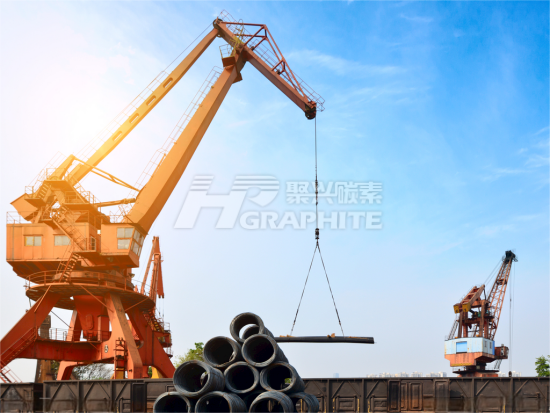【Steel Market】2025 H2 Outlook: A Turning Point Ahead

Graphite electrodes are vital consumables in electric arc furnace (EAF) steelmaking, mainly used for arc heating. With superior electrical conductivity and high-temperature resistance, they are key to improving both the output and quality of EAF steel.
【Steel Market】2025 H2 Outlook: A Turning Point Ahead
Reviewing the first half of 2025, the steel market was still in a transitional phase. Overall, the global situation was "strong externally but weak internally." Domestically, the profits of large-scale enterprises declined instead of rising, market demand remained lukewarm, and although the inventory-to-sales ratio of steel at certain stages was historically favorable, steel prices continued to drop. The internal competition ("involution") within the steel industry was more intense than generally perceived.
Looking ahead to the second half, the steel market is expected to undergo a turning point — while the price peak may be lower than in H1, the industry is likely to embrace a rebound opportunity amid rational production controls, and the rebound could last longer than it did in the second half of last year.
Specifically, under the influence of U.S. tariff policies, global economic growth is expected to slow in H2, with the U.S. also entering an active destocking phase. With macroeconomic and trade factors acting as drags, steel exports are expected to decline significantly, and weak external demand will likely pressure domestic demand. In addition, the marginal stimulus from the "Two New" policies may weaken, and raw material prices still have room to fall further — all these factors indicate the steel market may experience further phases of price decline in H2.

However, a turning point is also brewing. Market liquidity is expected to improve, the inflection point of industrial inventory is approaching, and the promotion of "anti-involution" measures may bring a shift in the steel market.
First, with expected rate cuts by Western central banks in H2 and increased European defense spending, there may be room for China to cut reserve ratios and interest rates. Coupled with new pro-growth policies, these factors will improve market liquidity and support the expansion of business operations.
Second, the current destocking cycle in industrial products has lasted 42 months, far longer than the average 21-month cycle. With improved liquidity, structural restocking may occur within the year, transitioning from "active destocking" to a "mild restocking" phase — a key condition for a rebound in steel prices.
Third, production control will likely exceed expectations. Notably, recent signals from multiple departments and meetings — including the Central Financial and Economic Affairs Commission — have intensively emphasized the need to combat "involution," helping enforce policy implementation. If supply constraints are strengthened, the negative impact of falling exports on demand can be offset. Despite short-term pressure on fundamentals, the situation may remain favorable overall.
Looking toward the 15th Five-Year Plan phase, the steel industry still faces challenges. Industry participants should focus on cost reduction and efficiency improvement, ecosystem building, and strategic transformation. Efforts should align across four dimensions: enhancing organizational efficiency through systemic reform, boosting personnel productivity through mechanisms, generating value through research, and increasing profits through strategic approaches. Additionally, leveraging big data to grasp market rhythms and building a data-driven decision-making system can transform efficiency into profitability.
Feel free to contact us anytime for more information about the EAF Steel market. Our team is dedicated to providing you with in-depth insights and customized assistance based on your needs. Whether you have questions about product specifications, market trends, or pricing, we are here to help.
No related results found








0 Replies